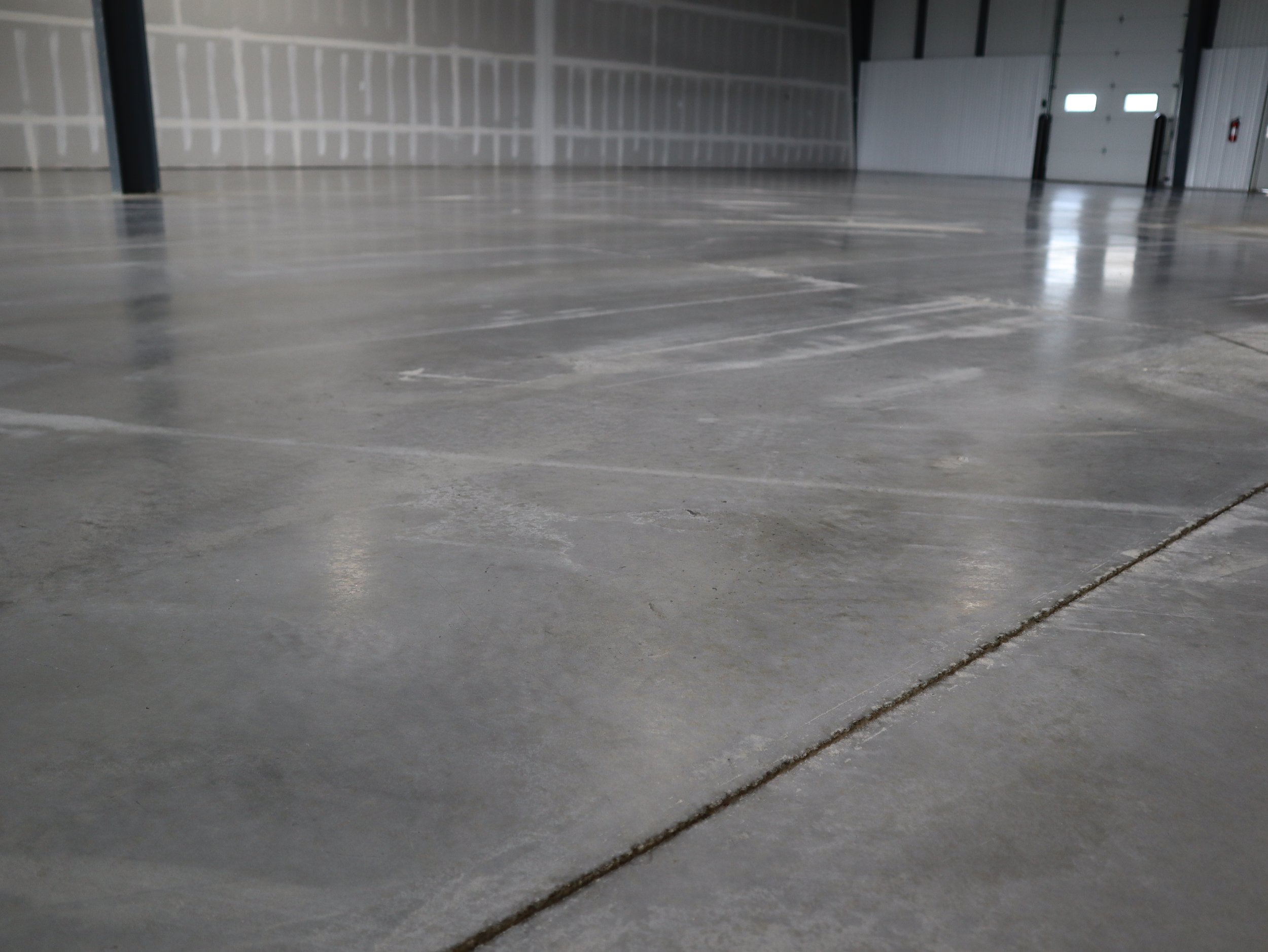Concrete Curing Time Explained: How to Stay on Schedule for Your Fall Build
As the crisp air of autumn settles in and the clock ticks toward the end of construction season in Minnesota, timing is everything—especially when it comes to concrete curing. Whether you're pouring commercial slabs, foundations, or sidewalks, understanding how long concrete takes to cure and how weather conditions affect that process can be the difference between staying on track or falling behind.
At Evenson Concrete Systems, we know the success of your fall build depends on precise planning, expert execution, and working with a commercial concrete partner who understands how to navigate Minnesota’s unpredictable seasonal changes.
In this guide, we break down what concrete curing really means, how long it takes, and smart strategies to keep your project on schedule this fall.
Inside the Blog:
Best Practices to Stay on Schedule
Evenson’s Commitment to Quality Fall Concrete Work
What Is Concrete Curing?
Concrete curing is the process of maintaining adequate moisture, temperature, and time to allow concrete to reach its desired strength and durability. Contrary to popular belief, concrete doesn’t “dry”—it cures through a chemical reaction called hydration, where water and cement react to form strong bonds within the mix.
The curing phase is just as important as mixing and pouring. Without proper curing, concrete can crack, lose strength, or deteriorate prematurely, resulting in costly repairs and delays.
How Long Does Concrete Take to Cure?
Concrete doesn’t reach full strength overnight. The standard curing time is:
Initial set: 24–48 hours (light foot traffic may be allowed)
Partial strength: 7 days (~70% of design strength)
Full strength: 28 days (standard benchmark for most applications)
However, environmental factors—especially fall temperatures—can significantly affect these timeframes.
How Fall Weather Affects Curing Time
Autumn is a popular time for construction, but it comes with its own set of challenges:
1. Temperature Drops
Cooler temperatures slow down the hydration process, delaying strength gain. If the temperature falls below 40°F (4°C), curing can nearly stop altogether unless steps are taken to protect the concrete.
2. Shorter Days
Less daylight limits working hours, making proper scheduling and sequencing critical.
3. Increased Moisture
Fall often brings rain and morning dew, which can impact surface curing if not managed correctly.
Concrete Curing Methods for Fall Construction
To overcome seasonal hurdles, contractors can employ several curing methods:
1. Moist Curing
Keep the concrete surface wet using misting, wet burlap, or soaker hoses. This is highly effective but labor-intensive and may not be practical in freezing temps.
2. Curing Compounds
Spray-applied compounds create a film that retains moisture. These are ideal for large commercial pours and work well during unpredictable weather.
3. Insulated Blankets & Heating
When temperatures drop, thermal blankets or heated enclosures help maintain a consistent curing environment. This is especially important for overnight protection during freeze-thaw cycles.
Best Practices to Stay on Schedule
To keep your fall project on track, proactive planning is key. Here are a few best practices our team at Evenson Concrete Systems recommends:
1. Use Accelerators
Incorporate admixtures to speed up curing without sacrificing strength. This helps compensate for slower chemical reactions in cool weather.
2. Plan for Longer Lead Times
Factor in additional curing days into your schedule. It’s better to overestimate and finish early than fall behind due to inadequate strength development.
3. Monitor Weather Closely
Use detailed forecasts and on-site thermometers to adjust your curing methods based on day-to-day conditions.
4. Work with Experienced Concrete Contractors
Not all concrete contractors understand the nuances of fall building. Choose a Minnesota-based expert like Evenson Concrete Systems who knows how to work with Mother Nature.
When Can You Build On or Use New Concrete?
Contractors and owners are often eager to move on to the next stage of the project. Here’s a general guide for usage:
Walking/Light Loads: 24–48 hours
Form Removal: 2–3 days
Vehicle Traffic: 7–10 days
Full Load-Bearing Capacity: 28+ days
Keep in mind that these timelines can vary based on curing method, mix design, and weather conditions.
Avoid These Common Fall Curing Mistakes
Pouring without ground preparation
Cold ground can rob heat from concrete, slowing or halting the cure. Always preheat the subgrade if temperatures drop significantly.Inadequate coverage
Never leave freshly poured concrete exposed overnight in the fall. Even a light frost can cause surface cracking.Neglecting moisture retention
Dry air or wind can evaporate water before the curing process is complete, leading to weak surfaces.
Evenson’s Commitment to Quality Fall Concrete Work
At Evenson Concrete Systems, our team of certified professionals specializes in commercial concrete services across Minnesota, with a deep understanding of seasonal challenges and solutions. We use top-tier materials, industry-best curing methods, and advanced project management to ensure every pour stays on schedule—even when the temperatures start to fall.
Our services include:
Slab foundations
Parking lots
Tilt-up construction
Reinforced concrete structures
Industrial and warehouse floors
We don’t just pour concrete—we pour confidence into every project.
Why Proper Curing is Worth the Time
Cutting corners during the curing process may save you a day or two in the short term, but it can lead to premature failure, safety hazards, and costly rework. A well-cured concrete structure will last for decades with proper care, providing a return on investment that far outweighs the extra time and attention required upfront.
Final Thoughts: Stay Ahead This Fall
Whether you’re racing to complete a build before winter or just getting started on a large-scale development, understanding concrete curing time is critical to your timeline and project success.
Don’t let unpredictable fall weather throw off your schedule. With the right approach—and the right partner—you can build smarter, safer, and stronger.
Ready to Pour?
Contact Evenson Concrete Systems today to schedule your fall build. Our experienced team is ready to help you stay on time, on budget, and ahead of the weather.


